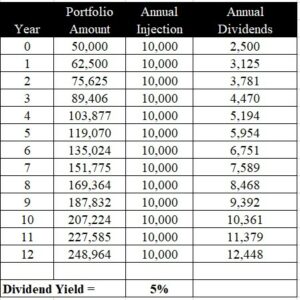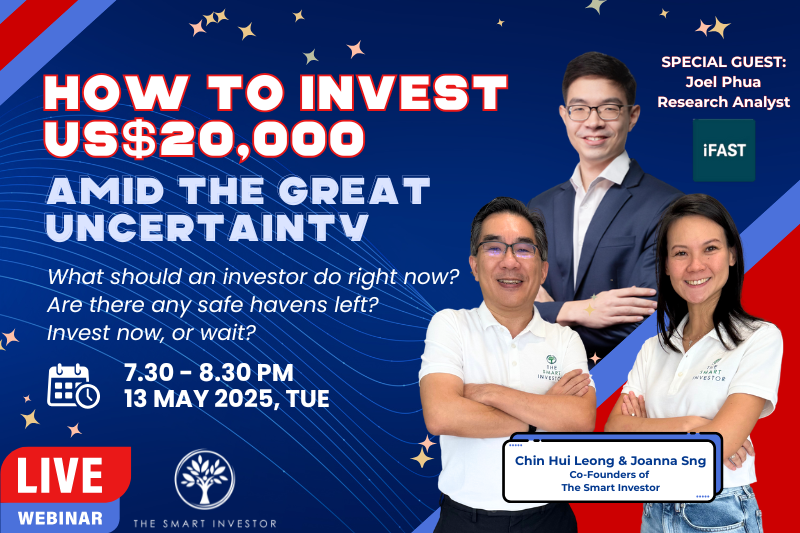Imagine not having to work, yet being able to enjoy a steady inflow of cash during your retirement.
Is this even possible?
I dare say most people in Singapore look forward to the day when they can finally stop working and enjoy their golden years in comfort.
Singapore’s working culture is tough. Many friends I know work excessive hours of overtime and hardly get to see their family. All this just to earn enough to put food on the table.
That’s why the idea of being able to generate a passive income of any sort is so enticing.
I can tell you first-hand that it is, though it requires patience and discipline.
For myself, my share investments are generating around S$1,500 per month in dividends on average. Let’s delve into how you can achieve this too.
Saving and investing
Personal finance is the cornerstone of a successful investment plan.
The first step in this journey is for you to save up some money, be it from your salary or bonus.
The simple rule is — if you don’t save, you will not have any money to invest.
Over time, a regular savings habit will ensure that you will always have cash on hand to invest, through good times and bad.
Savings also act as a good buffer in times of economic hardship. They enable you to become more resilient during a downturn as you have a cushion of cash to fall back on.
Gunning for dividend stocks
The next step is to select dividend-paying companies to invest your money in. These companies should, ideally, be stalwarts and leaders in their field with a long track record of consistent performance.
As you want to ensure that you can sleep well at night, only invest in companies with strong business models, sturdy balance sheets and a history of paying out regular dividends.
Build up your portfolio slowly and steadily. You can start off with just S$5,000 and place it in a stock that pays a 5% annual dividend.
Within a year, you can enjoy a S$250 dividend from this investment.
As time goes by, you can use your regular savings to continue to pump money into dividend-paying stocks, gradually building up an income-driven investment portfolio.
The power of compounding
Once the portfolio hits a certain size, the power of compounding will come into play.
Compounding refers to the reinvestment of your dividends to buy even more dividend-paying stocks.
Let’s do some simple math here. Imagine you have a portfolio worth S$50,000 with a 5% dividend yield after investing consistently for five years (S$10,000 injection per year). This portfolio will yield a total of S$2,500 in dividends, which can then be ploughed back into yet more dividend stocks.
The power of compounding can help to grow the portfolio’s size even more quickly.
In order to earn S$1,000 per month from dividends, the annual dividends need to amount to S$12,000. At a 5% dividend yield, you will need to have a portfolio size of S$240,000 (S$12,000 divided by 5%).

Starting with an initial portfolio of S$50,000, an investor consistently injects S$10,000 a year into the portfolio. With a dividend yield of 5%, and assuming all dividends are reinvested, it will take just 12 years to build up a S$240,000 portfolio.
As time goes by, hopefully, your income would also have increased along the way, enabling you to allocate even more money to dividend stocks. This can shorten the period required to hit the target of S$240,000.
Smart Investing: Slow and steady wins the race
Though this may seem daunting, remember the adage “slow and steady wins the race”.
No one said it was easy to generate a passive stream of income, but it’s definitely possible for the Average Joe who saves diligently and invests regularly.
Patience and discipline are needed to build up a portfolio that’s large enough to enjoy the fruits of compounding and generate a steady stream of cash flow.
Though the journey may seem long, the end goal promises to be very satisfying and can enable you to enjoy your golden years in peace and comfort.
If you’d like to learn more investing concepts, and how to apply them to your investing needs, sign up for our free investing education newsletter, Get Smart! Click HERE to sign up now.
Get more stock updates on our Facebook page or Telegram. Click here to like and follow us on Facebook and here for our Telegram group.




